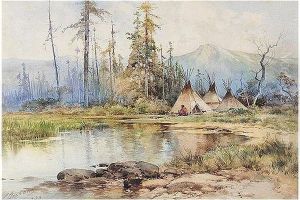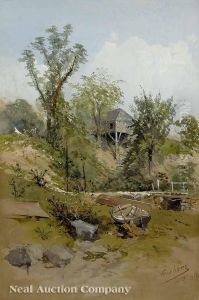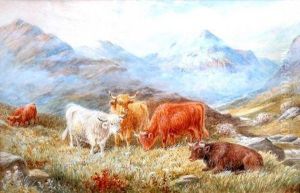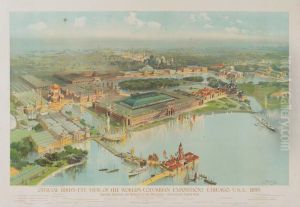Charles S. Graham Paintings
Charles S. Graham was an American artist known primarily for his work as an illustrator and landscape painter. Born in 1852, Graham's career spanned a period of significant change in the American art world, as the country transitioned from the dominance of European artistic influences to the emergence of a distinctively American voice in the arts. Despite the scarcity of detailed biographical information about Graham compared to his contemporaries, his contributions to American art, particularly in the realm of illustration, have been acknowledged by art historians and collectors alike.
Graham's artistic journey began in the latter half of the 19th century, a time when the United States was rapidly expanding westward. This era, marked by the allure of the American frontier, provided endless inspiration for artists fascinated by the country's vast landscapes and diverse cultures. Graham was among the artists who ventured into the West to capture its scenic beauties and the dynamic encounters between different communities. His works during this period were characterized by a keen attention to detail and a profound appreciation for the natural environment, qualities that made his paintings and illustrations resonate with audiences of his time.
As an illustrator, Charles S. Graham contributed to several prominent publications of the day, including Harper's Weekly, a leading American magazine known for its fine illustrations and wide-ranging content. His illustrations for Harper's and other publications captured the vibrancy and complexity of American life, from the bustling streets of growing cities to the serene and sometimes perilous landscapes of the frontier. Graham's ability to convey story and emotion through his illustrations made him a valuable contributor to the visual culture of the period.
In addition to his work as an illustrator, Graham was also recognized for his landscape paintings. Drawing upon his travels and experiences in the American West, he produced works that reflected both the beauty and the isolation of the American landscape. His paintings often depicted scenes of natural grandeur, rendered with a sensitivity to light and atmosphere that hinted at the influence of the Hudson River School, yet his style remained distinctive, marked by a personal interpretation of his subjects.
Charles S. Graham's death in 1911 marked the end of a career that had contributed significantly to America's artistic heritage. While he may not be as widely remembered as some of his contemporaries, Graham's work continues to be appreciated for its contribution to the narrative of American art, particularly in the fields of illustration and landscape painting. His ability to capture the essence of America's landscapes and the spirit of its people remains a lasting testament to his talent and vision.



